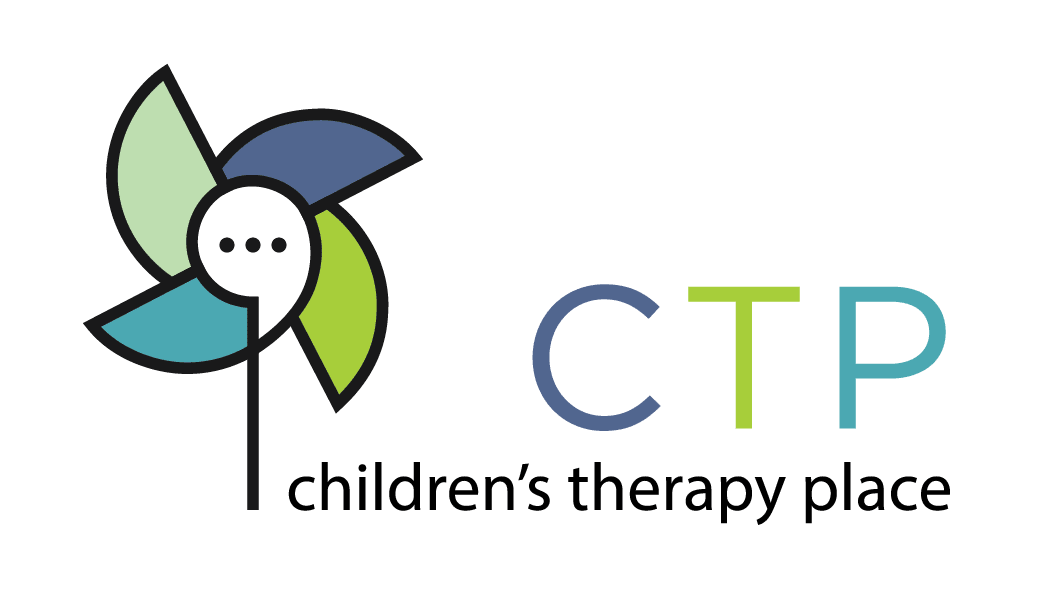Language Development Pyramid

By Annika Tribby, CCC-SLP & Alissa Ketterling, M.S., CCC-SLP
The Language Development Pyramid is a visual representation of the general order in which children acquire non-verbal and verbal communication skills. This tool is helpful to anyone involved in the lives of children because it provides a reference explaining what skills are needed before other skills are acquired. For instance, back-and-forth interactive games such as peek-a-boo typically occur before children follow two-step directions. It also shows that teaching articulation is not yet appropriate for the child who is babbling. Although some skills can develop simultaneously, such as attention skills and language comprehension, the pyramid demonstrates the overall expectations of typical language development.
Below you will find information about each step of the pyramid. Under each description are links to videos highlighting that particular skill.
Pre-verbal and Early Interaction
- Enjoys listening to the person speaking and watches people
- Engages in back and forth sound imitation
- Uses eye contact and smiles
- Anticipates being tickled
- Uses different cries to communicate various needs
- Plays peek-a-boo and other anticipatory games
- Gestures (points, waves, shakes and nods head)
- Uses joint attention by looking at objects, then looking at the communication partner to share the experience
Pre-Verbal and Early Interaction #1
This happy baby loves watching his mom, listening to her silly sound effects, and anticipating her next move.
Pre-verbal and Early Interaction #2
Mama and baby happily engage in reciprocal interactions using eye contact and anticipatory pauses.
Attention and listening
- Increases eye contact with the speaker
- Follows the speaker’s gaze
- Focuses on an object/person/activity of choice for 5+ minutes (by 2 years)
- Engages in music
- Looks to where voice is coming from
- Understands when someone calls their name
Attention and Listening #1
This video shows a child using joint attention within one activity. He follows simple instructions to “stack them up” with gestures to help him understand.
Attention and Listening #2
With a few repetitions of the direction to “put them in” / ”in the bowl,” the child listens to the adult and demonstrates understanding.
Play/Social
- Explores and begins to understand cause/effect
- Learns concepts such as in/out, up/down, fast/slow, big/little
- Understands spatial concepts (next to, behind, under)
- Interacts more with peers and adults
- Uses imaginative play
- Understands symbolic representation (pictures and words represent objects/actions/ideas)
Play #1
Here, the child initiates joint play with the adult by handing her a toy. He does this to request her to play with him and help make the car go. He waits excitedly for her to take her turn in this joint play activity.
Play #2
While playing with figurines, this child engages in pretend play while interacting with her mom.
Understanding
- Understands simple instructions but does not always choose to follow the them (e.g., “Put your shoes on;” “Put the blocks in the box”)
- Understands between 200 and 500 words by two years of age (many more words than they can say)
- Understands key words in phrases and their meaning (e.g., “We’re going to Grandma’s house!”)
- Understands simple who/what/where questions by 3 years of age
- Begins to understand reasons why by 3 years of age
Understanding #1
The child here listens to what color to choose next and makes the appropriate choice. He relies on his understanding of color concepts and follows through with the one-step direction. He also demonstrates understanding of action words when he follows the direction, “Can you close the box?”
Understanding #2
This child understands two concepts within the instruction, “Can the farmer drive the white car?” To follow this direction, he needs to understand WHO concepts (farmer, rather than another character) and DESCRIPTION (the white car, rather than any other vehicle). He also demonstrates understanding of action words (“Can you PUSH him?”).
Talking (Expressive Language)
- Says the first word at approximately 12 months
- Has a fifty-word vocabulary by about 2 years
- Begins combining words into phrases
- Sometimes memorize familiar phrases and sentences to communicate one thought
- Makes typical grammatical errors (e.g., pronoun errors, past tense)
- Can organize and reorganize sentences
- Uses synonyms and antonyms to clarify
- Defines words and concepts
- Summarizes what happened that day by four years of age
Expressive Language #1
After reading a short story and writing the answers to who, what, when, where, why, and how questions on a template, the child summarizes the story. This requires the expressive language skills of grammar, syntax, vocabulary, and cognitive organization.
Expressive Language #2
The child uses spontaneous language when he opens the house by exclaiming, “Everybody!” This means he uses words for a variety of reasons without needing to copy them from someone else first. He demonstrates good expressive language by answering an open-ended WHO question (“What do you see?”) and by naming characters and objects.
Speech Sounds (Phonology)
- Speech sounds develop in a typical pattern; we expect early speech sounds first with more difficult ones developing at later stages. *See attached speech sound development visual
- There are known speech error patterns. These are typical for certain ages and usually correct themselves at expected ages. For example, a 3-year- old is expected to say “wion” for lion because the ‘l’ sound develops after 4 years of age.
- A 4-year-old would typically say “dem” for them because the voiced ‘th’ sound develops around 6 years of age.
Speech Sounds #1
This child has good expressive language. He is working on specific speech sounds – in this case, the ‘R’ sound. Notice how he is able to self-correct his production after the first attempt with a cue from the adult.
Speech Sounds #2
This child demonstrates how he can alter his ‘R’ sound when saying a short sentence with his target sound in it. The ‘R’ sound is a common sound speech pathologists work on in speech therapy.
Notes:
These stages do not happen sequentially only. The stages can develop concurrently. The above stages show that we cannot begin working on perfect speech sounds if the child is not yet demonstrating joint attention or understanding when we call their name, for example.
Additional Useful Resources:
Speech, language and communication
Key Milestones for 2-3 Year Olds | Milestone Checklists

